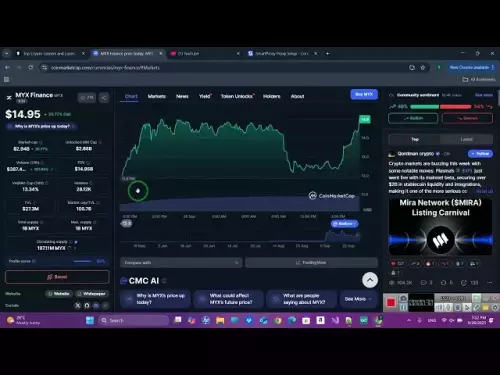-
 bitcoin
bitcoin $109547.008142 USD
0.04% -
 ethereum
ethereum $4011.838726 USD
-0.05% -
 tether
tether $1.000402 USD
-0.01% -
 xrp
xrp $2.798606 USD
0.88% -
 bnb
bnb $970.877944 USD
1.39% -
 solana
solana $202.237275 USD
-0.95% -
 usd-coin
usd-coin $0.999673 USD
0.00% -
 dogecoin
dogecoin $0.229294 USD
-1.15% -
 tron
tron $0.336370 USD
-0.45% -
 cardano
cardano $0.777260 USD
-1.66% -
 hyperliquid
hyperliquid $45.503019 USD
1.73% -
 ethena-usde
ethena-usde $1.000362 USD
0.01% -
 chainlink
chainlink $20.785303 USD
-1.10% -
 avalanche
avalanche $28.755822 USD
-0.11% -
 stellar
stellar $0.358303 USD
-0.48%
How to play BitFlyer delivery contracts
Traders can monitor their open positions, manage risk through margin calls and stop orders, and follow industry best practices to maximize profits and mitigate potential losses when trading delivery contracts on BitFlyer.
Nov 08, 2024 at 09:30 am

BitFlyer, Japan's largest cryptocurrency exchange, offers a comprehensive suite of delivery contracts for traders of all experience levels. These contracts allow traders to speculate on the future price of cryptocurrencies without having to take ownership of the underlying assets. This guide will provide a step-by-step tutorial on how to play BitFlyer delivery contracts, including account setup, order types, risks, and best practices.
Step 1: Open a BitFlyer AccountTo trade delivery contracts on BitFlyer, traders must first open an account. The process is relatively straightforward and can be completed online or via the BitFlyer mobile app. Required information includes:
- Personal information (name, address, contact details)
- Proof of identity (e.g., passport, driver's license)
- Proof of residency (e.g., utility bill, bank statement)
Once the account is verified, traders can deposit funds and begin trading.
Step 2: Understand Delivery ContractsBitFlyer offers delivery contracts on various cryptocurrencies, including Bitcoin, Ethereum, and Litecoin. Delivery contracts are standardized agreements to buy or sell a specific quantity of an asset at a predetermined price on a specific date. The difference between the contract price and the underlying asset's spot price at the settlement date determines the profit or loss for traders.
Key features of delivery contracts include:
- Contract size: The amount of the underlying asset being traded (e.g., 1 BTC for Bitcoin contracts)
- Contract duration: The period during which the contract is open for trading (e.g., 1 month)
- Settlement date: The date on which the contracts expire and the underlying assets are exchanged
BitFlyer offers two main order types for delivery contracts:
- Market Order: Executes immediately at the current market price.
- Limit Order: Specifies a desired price for execution. The order will only execute if the market price reaches or exceeds the specified price.
Traders can also use advanced order types such as stop orders and conditional orders to automate their trading strategies.
Step 4: Place an OrderTo place an order, traders need to select the desired cryptocurrency, contract duration, and order type. They can then specify the quantity of contracts to trade and the desired execution price if using a limit order. Once the order details are entered, traders can click "Buy" or "Sell" to submit the order.
Step 5: Manage Your PositionsOnce an order is placed, traders can monitor their positions in the "Positions" tab. This tab shows the current status of all open contracts, including profit/loss, margin requirements, and liquidation price. Traders can manually close their positions at any time before the settlement date.
Step 6: Understand the RisksDelivery contracts are leveraged products that can amplify both profits and losses. Traders should be aware of the following risks:
- Margin Calls: If the trader's account falls below the required margin level, they will receive a margin call and may be forced to liquidate their positions at a loss.
- Liquidations: If the trader's account becomes insolvent, their positions will be automatically liquidated to cover the losses.
- Price Volatility: The prices of cryptocurrencies can fluctuate rapidly, which can lead to significant losses in a short period.
To maximize profits and mitigate risks when trading delivery contracts, traders should follow these best practices:
- Use Stop Orders: Stop orders can help limit losses by automatically closing positions if the market price moves against the trader's position.
- Manage Risk: Determine the maximum risk that can be tolerated and trade accordingly.
- Stay Informed: Keep up-to-date with the latest news and developments that may affect the cryptocurrency market.
- Consider Hedging: Use options or other strategies to reduce the risk of large losses.
Disclaimer:info@kdj.com
The information provided is not trading advice. kdj.com does not assume any responsibility for any investments made based on the information provided in this article. Cryptocurrencies are highly volatile and it is highly recommended that you invest with caution after thorough research!
If you believe that the content used on this website infringes your copyright, please contact us immediately (info@kdj.com) and we will delete it promptly.
- Ripple, Shiba Inu, and Digitap: The Crypto Landscape in 2025
- 2025-09-28 23:05:12
- Crypto Portfolio Management: Riding the Whale Waves and Finding Gems
- 2025-09-28 22:45:14
- BTC Price Wobbles as Bitcoin ETFs See Inflows, Ethereum ETFs Bleed: What's the Deal?
- 2025-09-28 22:25:17
- DeepSnitch AI: The Meme Coin Alternative with 1000x Potential?
- 2025-09-28 22:45:14
- BlockchainFX, Solana, Dogecoin: Decoding the Crypto Shift
- 2025-09-28 23:05:12
- Crypto's Wild Ride: Dogecoin, AVAX, TRUMP, and the Newcomer MAGACOIN FINANCE
- 2025-09-28 23:10:01
Related knowledge
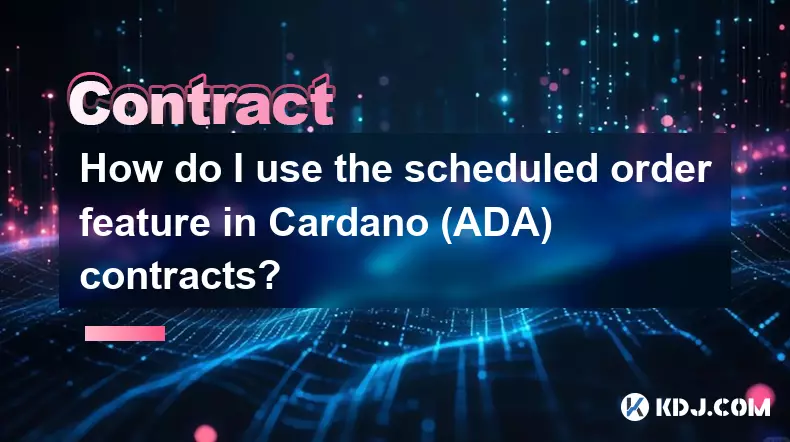
How do I use the scheduled order feature in Cardano (ADA) contracts?
Sep 28,2025 at 10:18pm
Understanding Scheduled Orders in Cardano Smart ContractsCardano operates on a proof-of-stakes consensus mechanism and uses the Plutus scripting langu...

How do I enable the "scalping-only" mode for Cardano (ADA) contracts?
Sep 24,2025 at 03:19am
Understanding Scalping Strategies in Crypto Derivatives1. Scalping in cryptocurrency trading refers to executing multiple short-term trades within min...
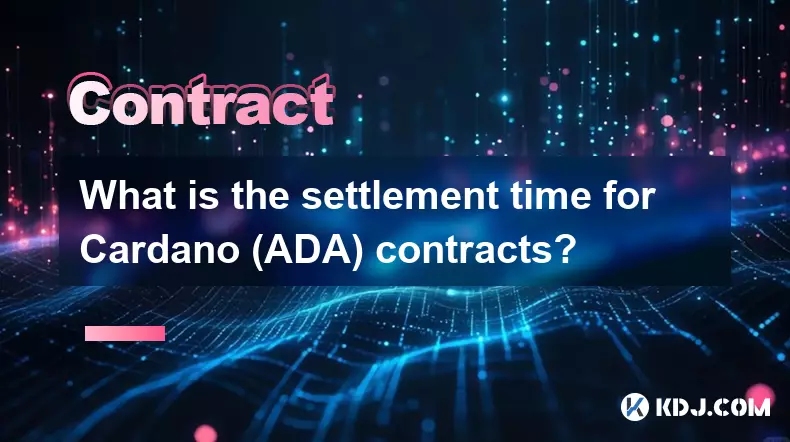
What is the settlement time for Cardano (ADA) contracts?
Sep 28,2025 at 04:18am
Understanding Cardano's Contract Settlement Mechanism1. Cardano operates on a proof-of-stake consensus model known as Ouroboros, which fundamentally i...
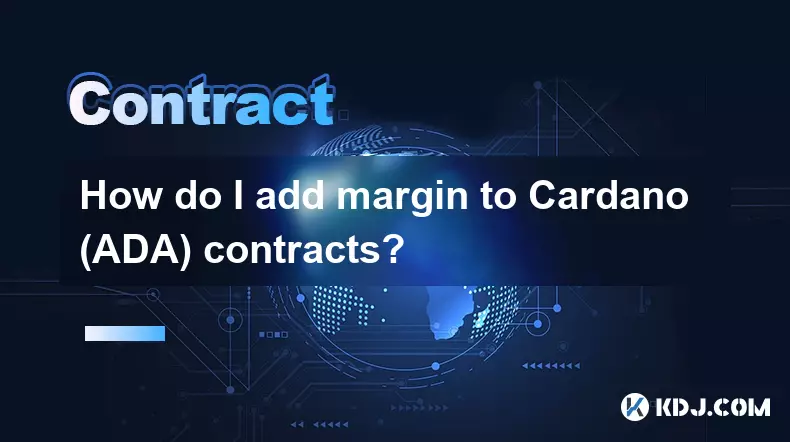
How do I add margin to Cardano (ADA) contracts?
Sep 27,2025 at 07:54pm
Understanding Margin in Cardano (ADA) Smart ContractsCardano operates on a proof-of-stake blockchain that supports smart contracts through its Plutus ...
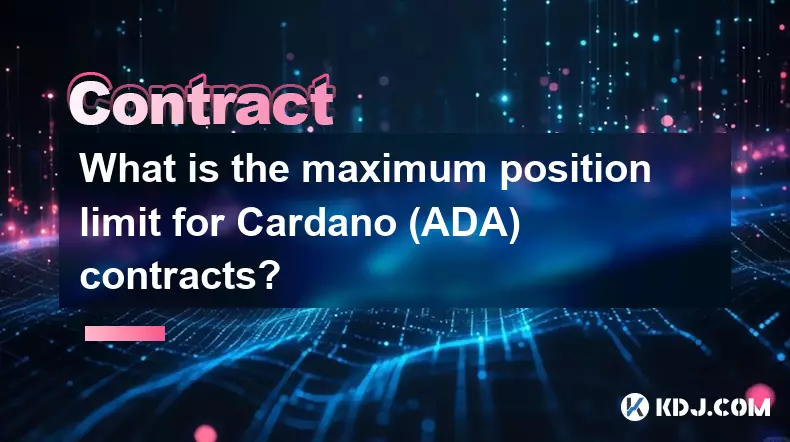
What is the maximum position limit for Cardano (ADA) contracts?
Sep 23,2025 at 11:00pm
Understanding ADA Futures and Derivatives Market Structure1. Cardano (ADA) futures contracts are offered by several major cryptocurrency derivatives e...
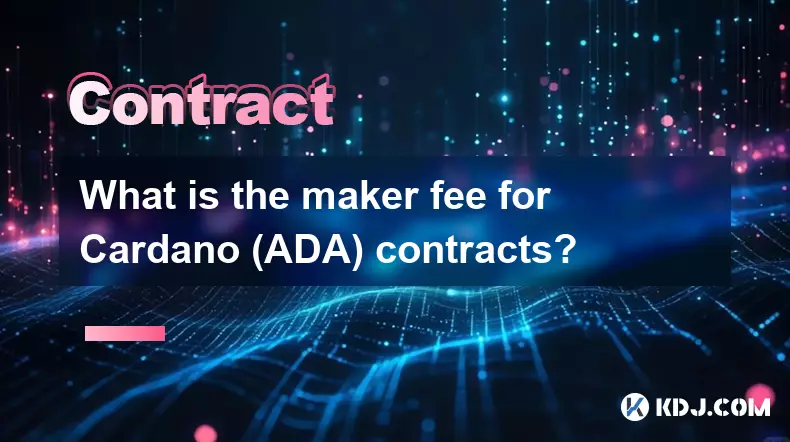
What is the maker fee for Cardano (ADA) contracts?
Sep 26,2025 at 09:01am
Understanding Maker Fees in Cardano (ADA) Contracts1. The concept of maker fees applies broadly across decentralized exchanges and smart contract plat...

How do I use the scheduled order feature in Cardano (ADA) contracts?
Sep 28,2025 at 10:18pm
Understanding Scheduled Orders in Cardano Smart ContractsCardano operates on a proof-of-stakes consensus mechanism and uses the Plutus scripting langu...

How do I enable the "scalping-only" mode for Cardano (ADA) contracts?
Sep 24,2025 at 03:19am
Understanding Scalping Strategies in Crypto Derivatives1. Scalping in cryptocurrency trading refers to executing multiple short-term trades within min...

What is the settlement time for Cardano (ADA) contracts?
Sep 28,2025 at 04:18am
Understanding Cardano's Contract Settlement Mechanism1. Cardano operates on a proof-of-stake consensus model known as Ouroboros, which fundamentally i...

How do I add margin to Cardano (ADA) contracts?
Sep 27,2025 at 07:54pm
Understanding Margin in Cardano (ADA) Smart ContractsCardano operates on a proof-of-stake blockchain that supports smart contracts through its Plutus ...

What is the maximum position limit for Cardano (ADA) contracts?
Sep 23,2025 at 11:00pm
Understanding ADA Futures and Derivatives Market Structure1. Cardano (ADA) futures contracts are offered by several major cryptocurrency derivatives e...

What is the maker fee for Cardano (ADA) contracts?
Sep 26,2025 at 09:01am
Understanding Maker Fees in Cardano (ADA) Contracts1. The concept of maker fees applies broadly across decentralized exchanges and smart contract plat...
See all articles






















